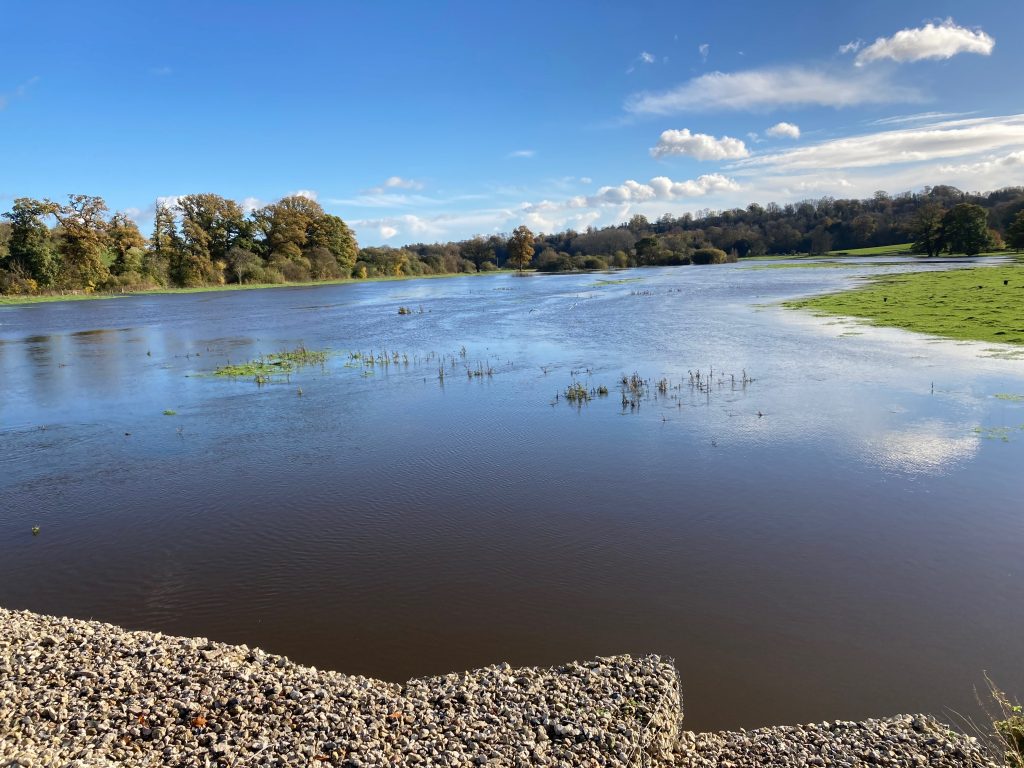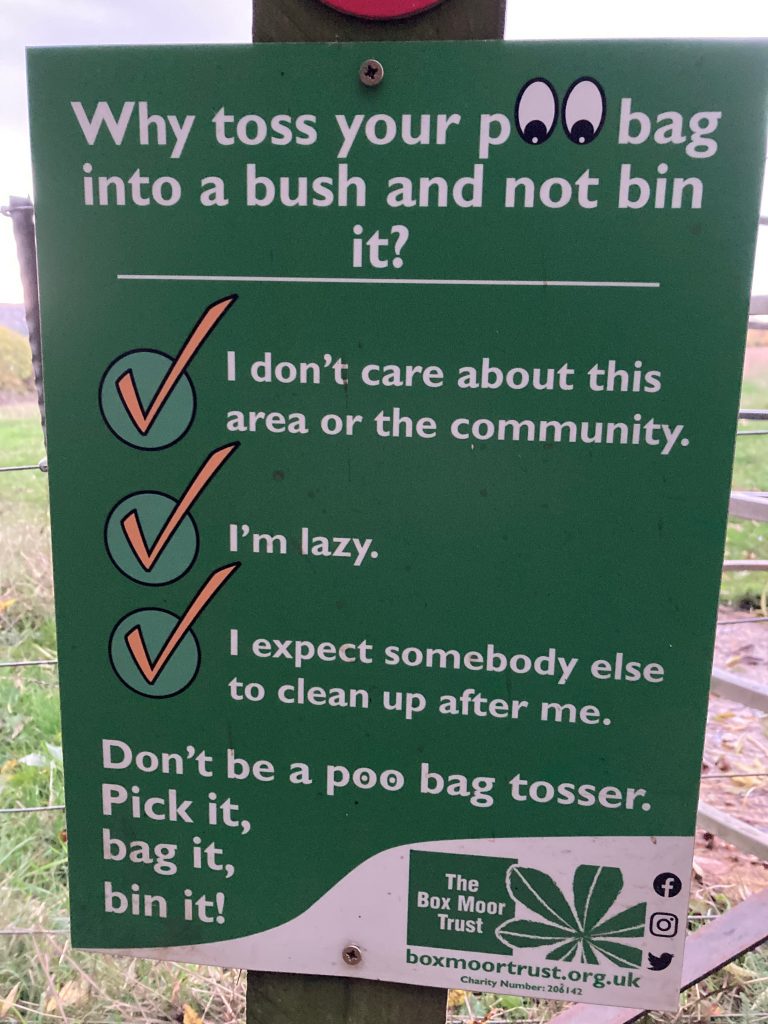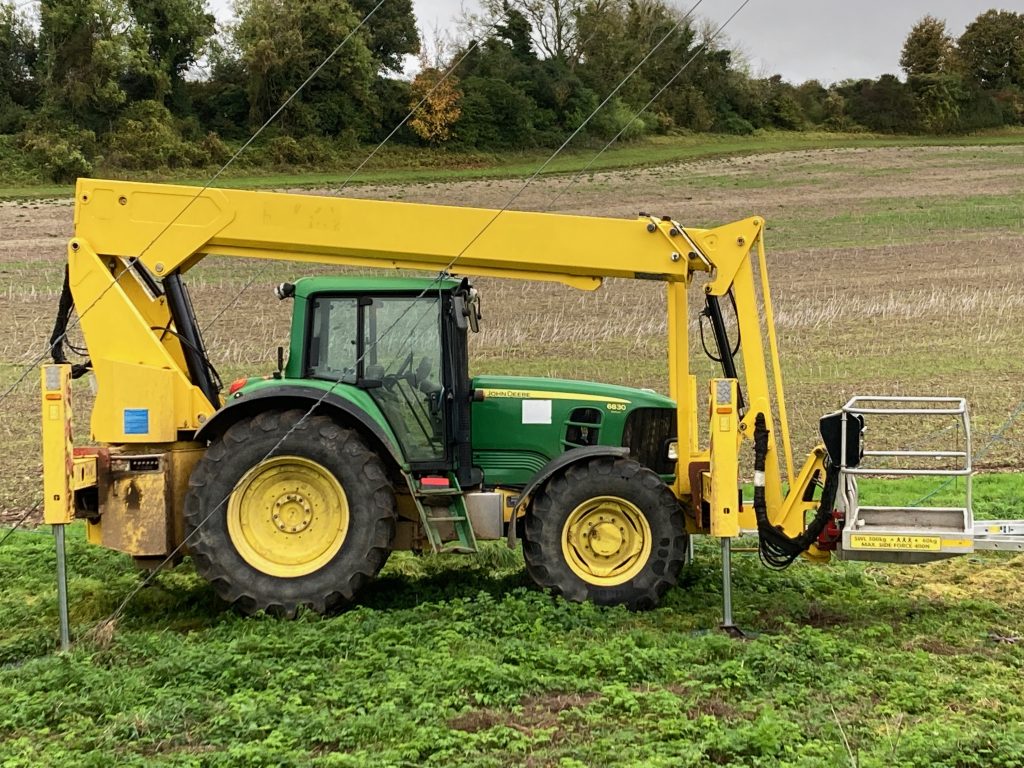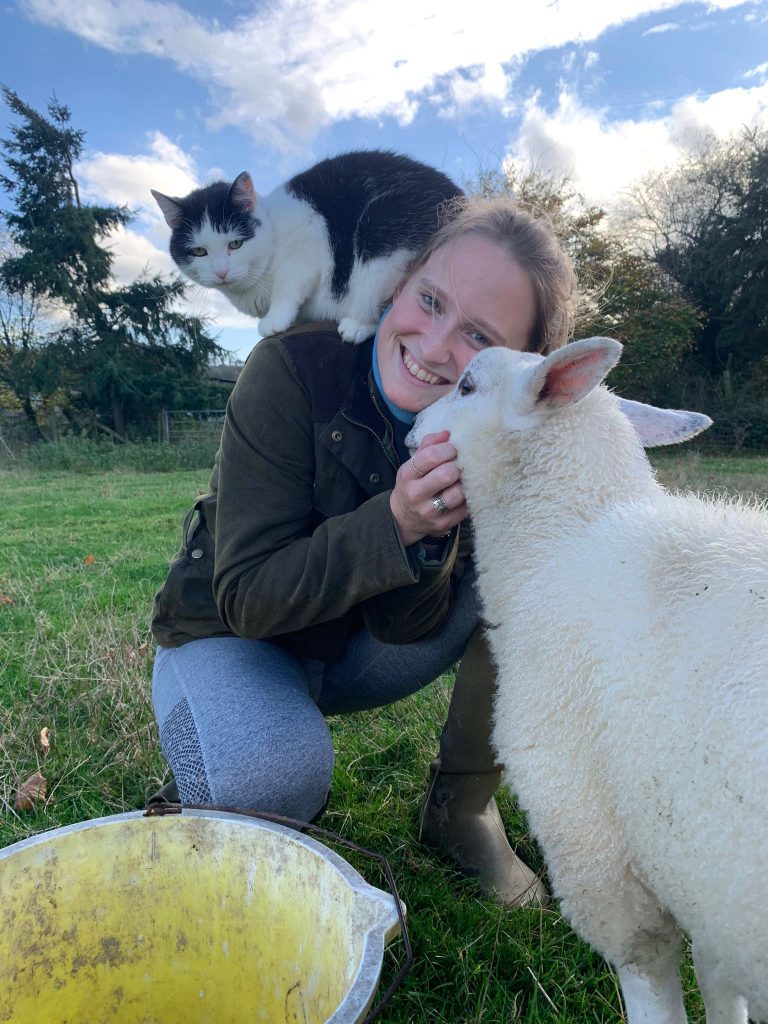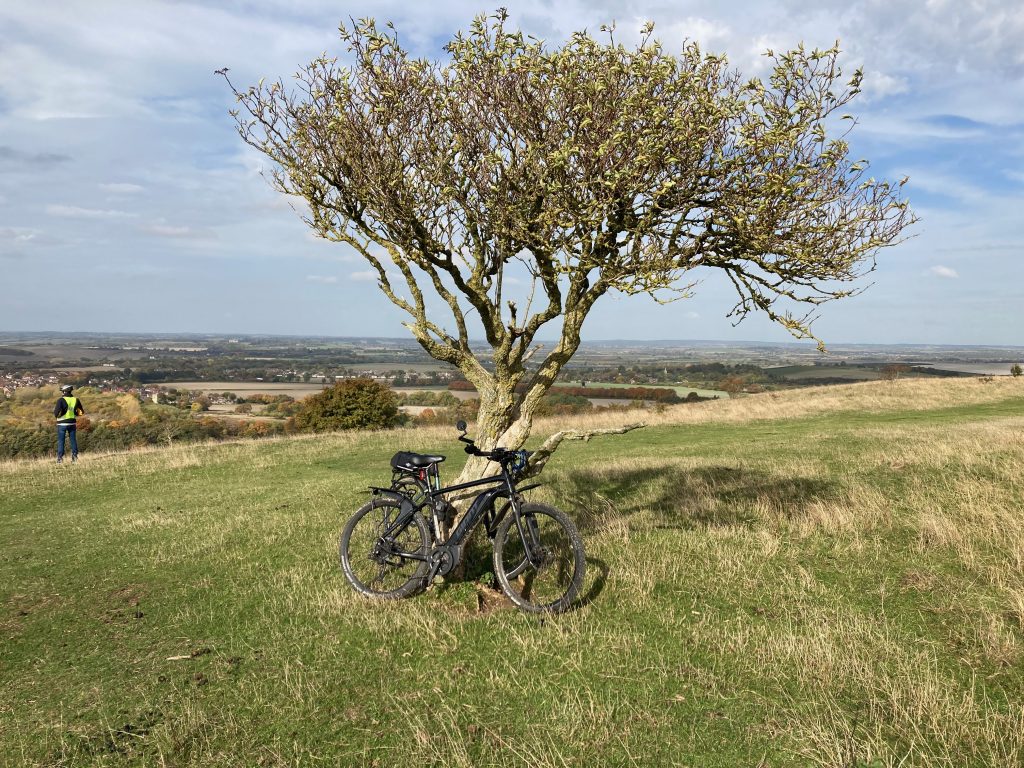
The season of mists and mellow fruitfulness is upon us, not to mention day after day of miserable dampness. After a soaking wet October, we launched into an equally wet November, 90mm in the first 10 days, and another 125 since then, in old money that’s 8 1/2 inches. Luckily we had sown the last of our wheat on the last day of October and it is up now and looking well, thank goodness we didn’t roll it. What is of more concern is the unseasonal mildness, by which I mean warmth. Why the term mild, this has been pretty extreme ? Our rape is full of phoma disease, the cereals are full of aphids, and the grass has barely stopped growing, so not all bad then.
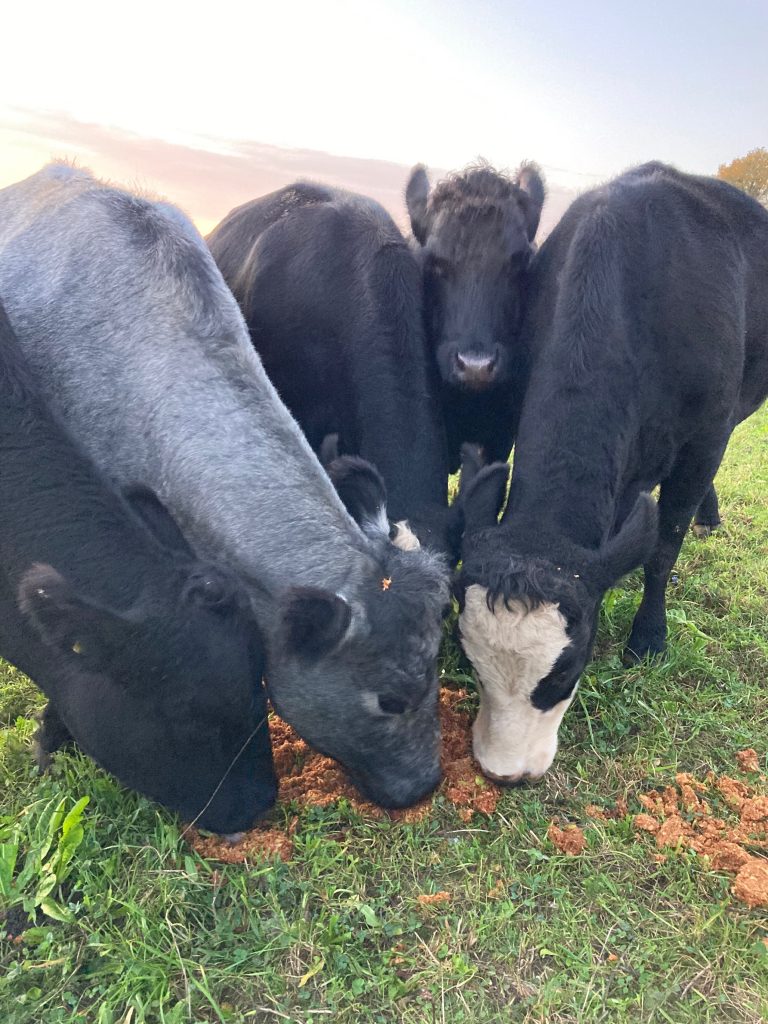
Our cattle are still outside, but not for much longer now day length is reducing leading to a slow down in grass growth. Once the grass has been eaten it will be weaning time. The calves, now 9-10 months old, really should be able to cope without mummy now, and they will be moved onto the best of our cover crops. Having been sown so late we have been worried there wouldn’t be enough cover crop to sustain the youngstock through the winter, but the weather being as fickle is it is, has allowed quite a lot of catch up and there is a chance there will be enough. The year older group will also be heading for cover crop shortly, backed up with hay or silage. The cows will head for luxury indoor accommodation, bedded on straw with an under mattress of woodchip this year. Having coppiced some hedge last winter, and chipped the brash as the first step towards decomposition, a tip we learnt at the Groundswell event in the summer is to lay a base of wood chip beneath the straw in the cattle housing. Sitting throughout the winter soaked in cow pee should help it on the way to breaking down when added to a compost windrow next year. When straw or wood break down in soil, they need to absorb quite a lot of nitrogen, which is then not available for crop plants to use. If we can speed the decomposition with pee-innoculation prior to good composting, the end product should be that much more useful. Last season we built compost heaps in windrows of a size to fit a compost turning machine such as we saw at Groundswell. Our friend Jimi came along with his machine in August to show us what it could do, he worked his way through most of our heaps before the machine broke. It is usually difficult to get good decomposition of farmyard manure in a very dry year, but even just a single treatment with Jimi’s machine made a huge difference, we ended up with a pretty well rotted and friable product which was easy to spread evenly. We have put in a bid for a grant towards a compost turner for ourselves, as we can see this will be one way of improving our soils and at the same time reducing our dependence on artificial fertiliser.
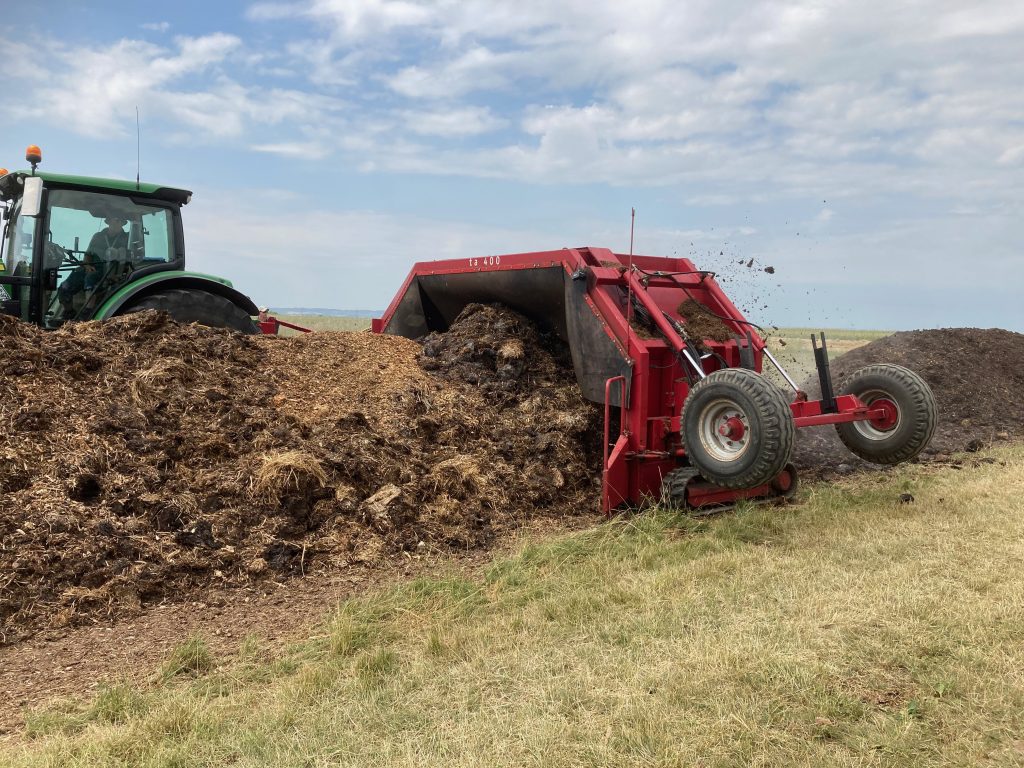
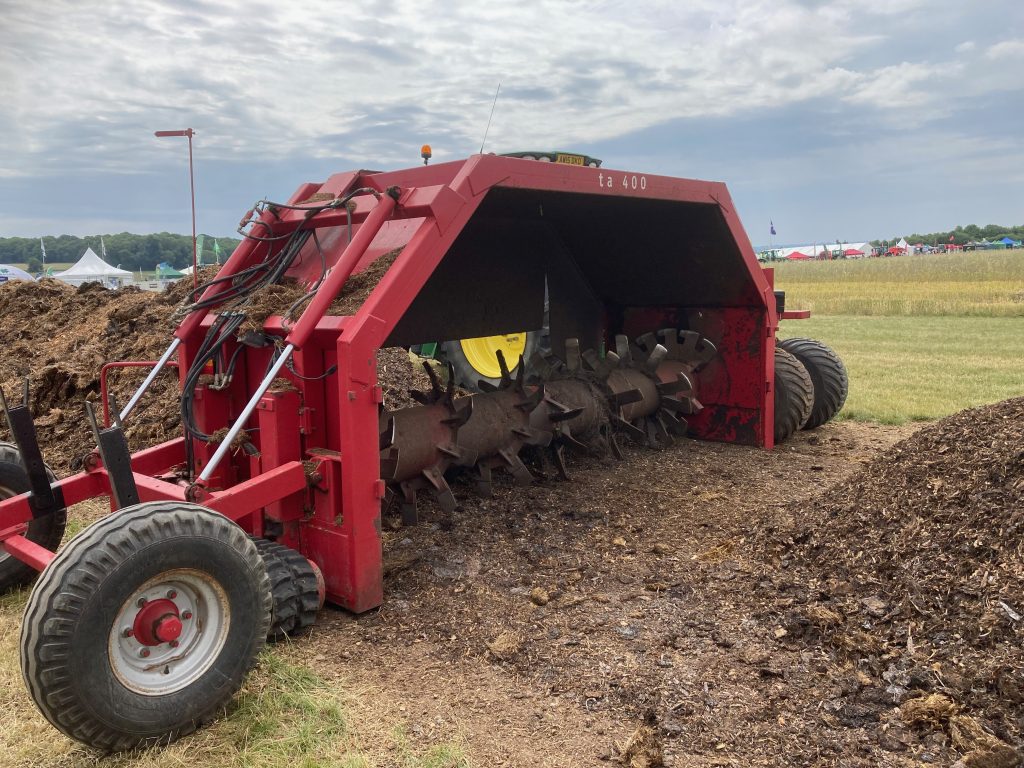
Recent stories in the press about a revolutionary novel food that is being developed by a company in Finland are raising a few eyebrows, and with this in mind a small group of farmers arrived at the Electric Palace in Bridport last Saturday to join the throng queuing to listen to George Monbiot, campaigning journalist of some reputation. Bridport Literature Festival had engaged George to speak about the ideas in his book Regenesis, an extremely well researched demolition of livestock farming. Much of what he says rings true, eg problems in the River Wye catchment, and other UK rivers, as well as numerous issues related to intensive livestock systems around the world, however it is hard to listen to him when he effectively rubbishes organic, regenerative and extensive stock systems, because they use too much land.
He then produces with a flourish this protein dense bacterial miracle powder developed by a company in Finland called Solar foods, which only needs CO2 and electricity to grow, which it is claimed could feed the world from an area the size of greater London. After ranting about the power of corporate business (not to mention the NFU and DEFRA and how cosy they are) he then expects us to believe that this wonder food will not need to be ultra-processed and heavily invested in by big business in order to render it both edible and widely available.
Monbiot loves to blame farming for all our climate woes. I would be more sympathetic to him if he at least acknowledged that it is the amazing achievements of farming that have made us victims of our own success. We have grown enough food to enable us to support close to 8 billion people, growing by 80 million per year, this surely is where our climate problem really lies. As with all things the problem is demand driven, and without strict regulation the markets have conspired to produce enough food, cheaply enough, to get us to where we are. It is the environment, of course, which has suffered as a result, and we still haven’t put a proper value on that. Some would say the market should solve the problem. If the bacterial protein-rich goo is cheap and tasty enough people will buy it, and we old fashioned livestock producers will go out of business, or simply become a niche for rich people.
By chance we met him very briefly in the pub afterwards, but sadly he had no time to sit down and chew the fat with a quartet of livestock farmers…….. But he did agree to a selfie.
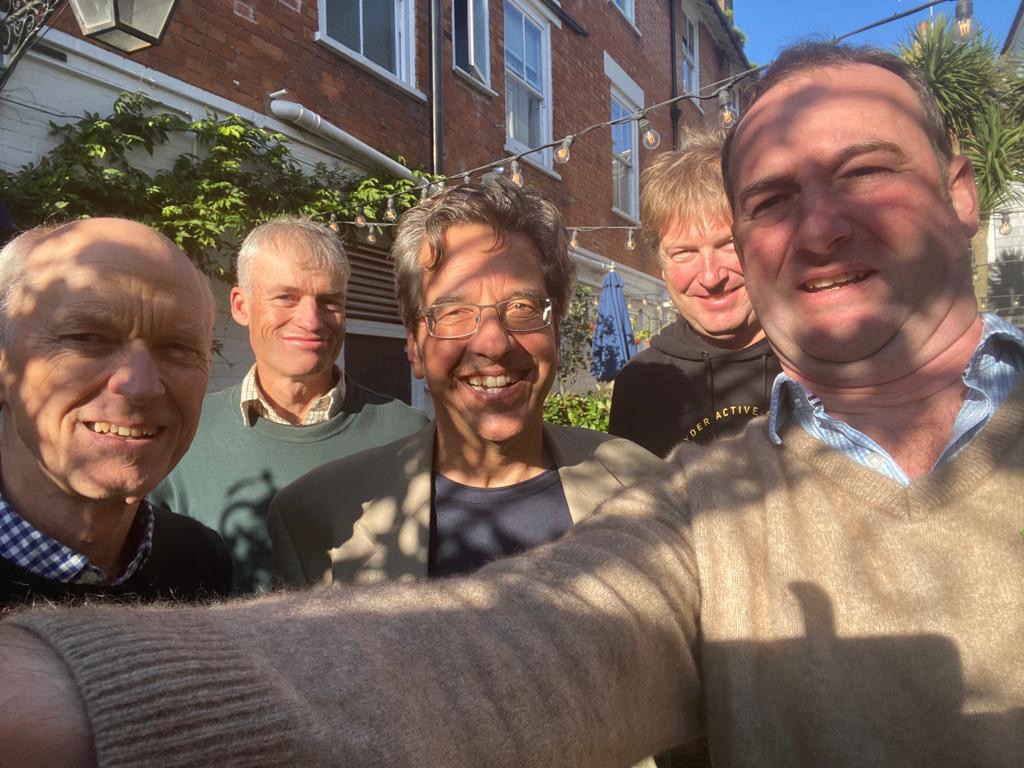
An interesting tale came to me from an old pal who has spent the last 30 years managing a large estate in Essex. Recently retired he now has time to appreciate the finer things in life, such as the rescue of a threshing machine that was closed up into a shed in Suffolk 50 years ago. It recently changed hands for £500, and the time came for it to be moved. The barn had to be half dismantled, then the machine was slowly extracted and loaded onto a lorry, to go to its new home where a few light repairs were made, and it was then put to work at Bardwell Windmill, still in Suffolk. The video shows that it rolled well on its wheels, which look sound, it may have been stored on blocks away from the damp. Amazing to see it back to work after such a long lay-off.
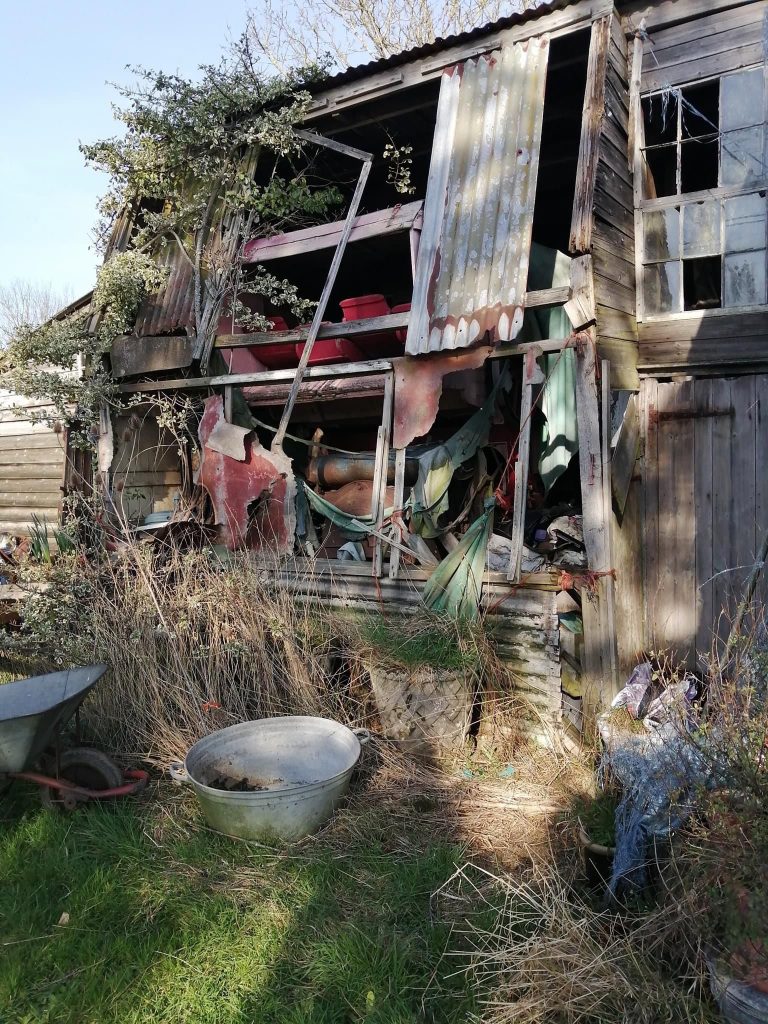
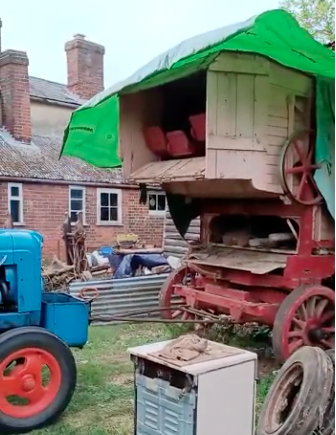
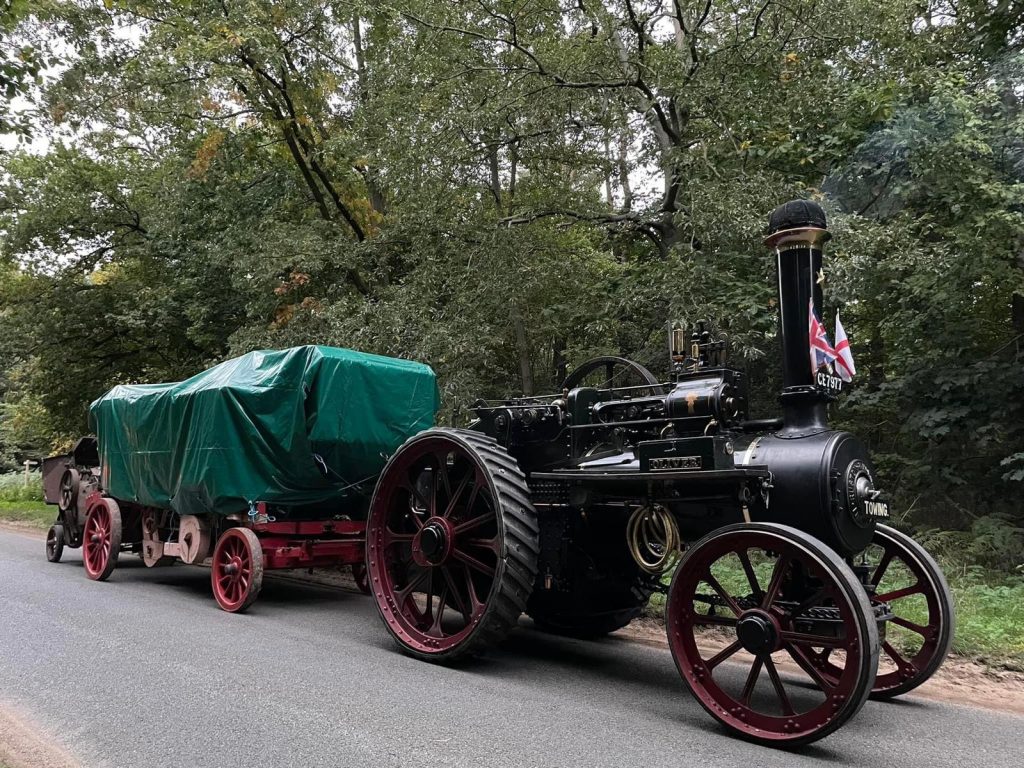
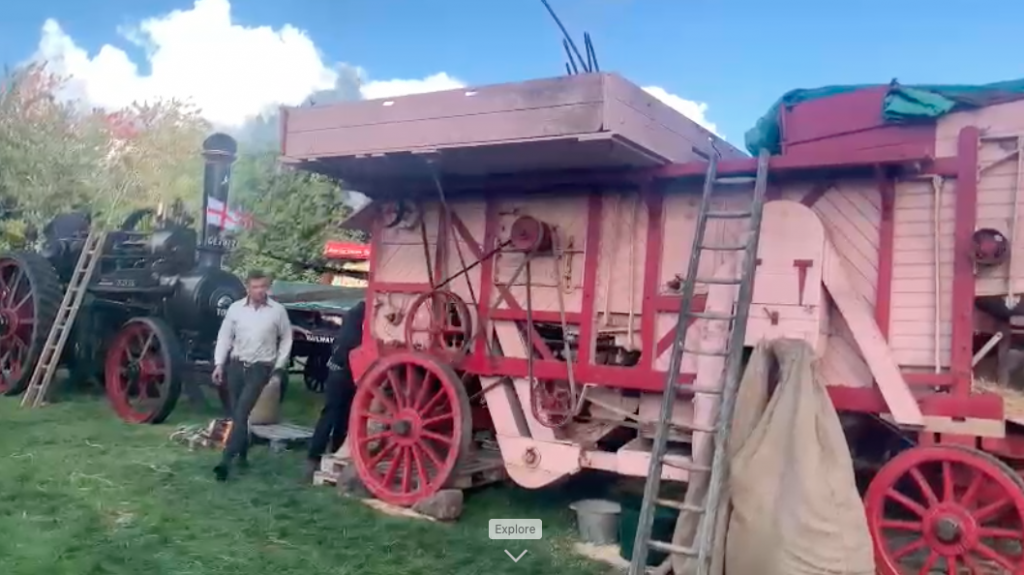
A lovely addition to the story, which comes from the same source, (thanks Alex), relates to the following picture:
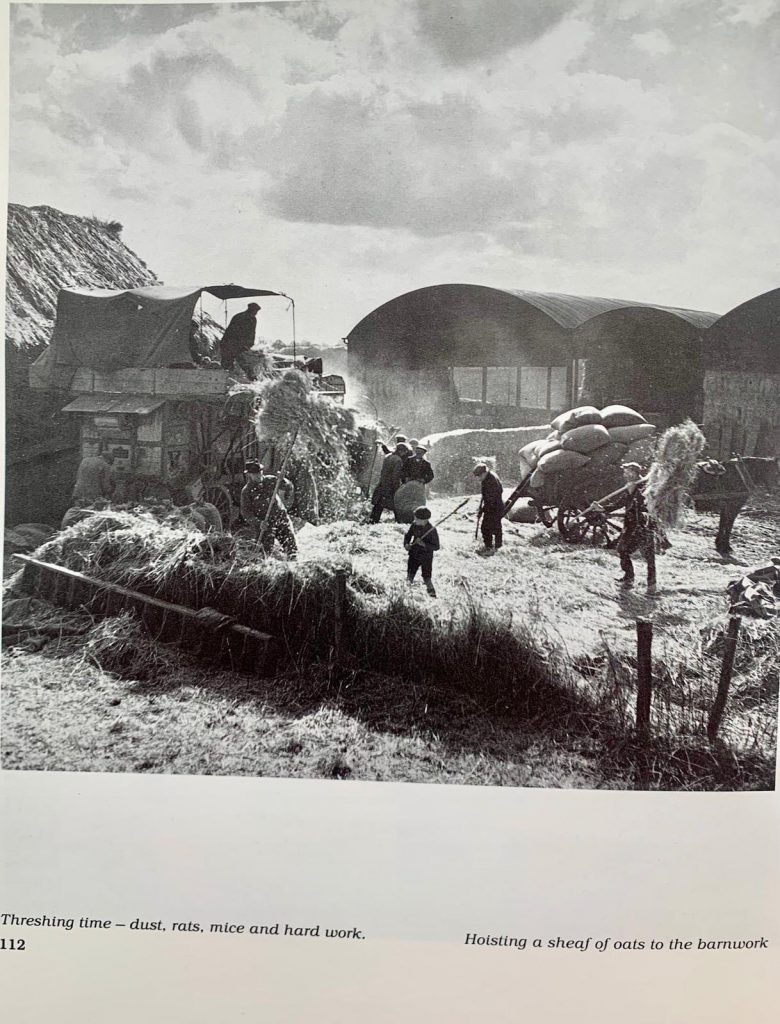
“Picture of the same threshing machine working in the late 1940’s from a book on Essex agriculture. The boy trying to catch the mice on the stack was one of my senior tractor drivers when I took over at the Rayleigh Estate He told me that at the time the photo was taken there was a Department of Agriculture scheme that paid a few pennies per dozen mouse tails and that there was a “Department official” who came round on a bicycle to wherever the threshing machine was working and paid out the payment in cash. The young boys soon realised that after they had handed over the little bunches of mouse tails tied up in dozens and received their cash, that the Department man cycled off down the lane and as soon as he was out of sight he tossed the mouse tails over the hedge. The boys would wait in hiding where this usually happened and having collected the discarded bunches, would handed them in again the next day for more cash!”
